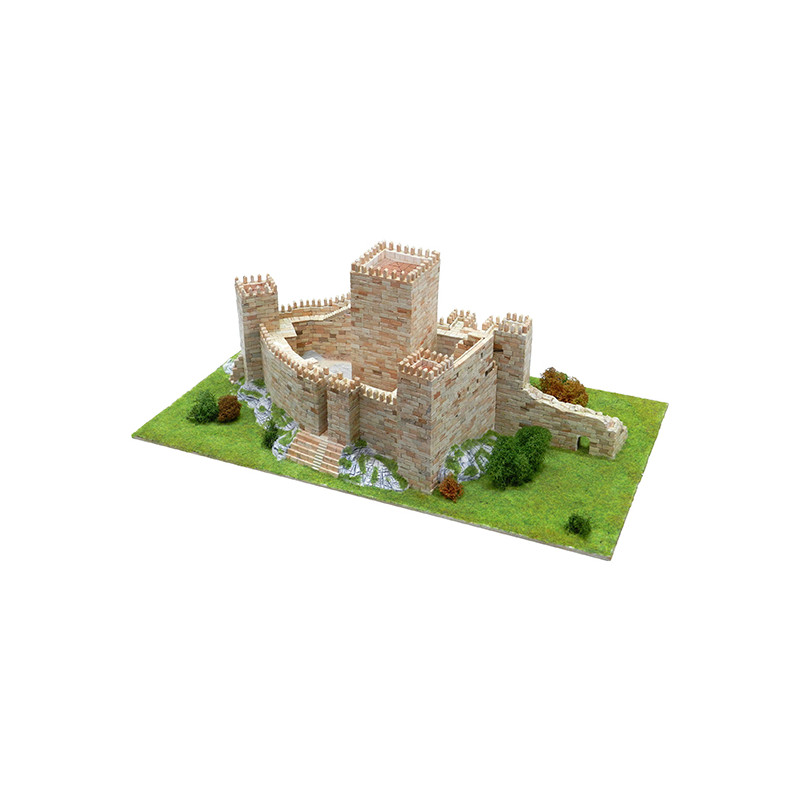Construction kits from Spanish company Aedes Ars are designed to construct reproductions of historical buildings of high cultural value such as castles, churches, bridges, lighthouses. Some of them have been cataloged as world heritage monuments. The construction materials used in the kits (alabaster brick, ceramic tile) are very similar to those used in the original buildings, and the quality and shapes and colors are based on the technology of the production process of the Aedes Ars company. Some kits include ceramic architectural elements (lintels, carvings, etc.), which reflect with a high degree of detail the actual appearance of the various parts of the original construction. The construction of the kit starts with gluing the cardboard skeleton and then gluing the skeleton with alabaster bricks, ceramic tiles according to the included instructions. The constructions are designed for people from 12 years of age with a difficulty scale from 1 to 10, develop manual skills, spatial imagination and creativity. Constructing such a building can be a great family entertainment, and the finished model will arouse interest and admiration as well as will be a decorative element of our home.
The monument and its history
The castle is a military fortification dating mainly from the Late Romanesque period and expanded in the Early Gothic era of Portuguese architecture. Its area is delineated by walls forming a pentagram-like shield, consisting of eight rectangular towers, a military plaza and a central fortress.
A symbol of the medieval Portuguese castle, Guimarães is associated with the origins of the Portuguese nation.
At the end of the 11th century, the castle was greatly expanded and rebuilt under the direction of Count D. Henrique to serve as his residence. The nobleman decided to destroy what was left of Mumadona's construction, while enlarging the castle's area and adding two entrances. The castle became the official royal residence from 1139, when Portugal gained its independence.
After years of family rivalry, in 1128, the Battle of São Mamede (carried out in the fields of the same name) gave birth to the independence of Portucale and the formation of the nucleus of future Portugal.
From the late 13th to early 14th centuries, the castle was rebuilt by King Denis, giving it the form that survives today.
In 1910, the castle was declared a national monument. In 1937, the General Service of Buildings and Monuments began restoration.
On June 1, 1992, the building became the property of the Instituto Português do Património Arquitetónico.
The castle is located in the northern limits of the Guimarães urban area, isolated on a small hill formed of granite and surrounded by a small forest park accessed by several walking trails. Next to the southern tower is a bronze medallion by D. Afonso Henriques, above a large rock.
Modem specifications :
- Location: Portugal / 10th century
- Scale: 1:185
- Number of elements:5400
- Degree of difficulty: 6,5/10
- Dimensions: 500 x 290 x 190 mm
For more information, photos and building instructions, please visit the manufacturer's website [tab above]
And, how to build a model ? See the example of similar builds from Aedes Ars:




